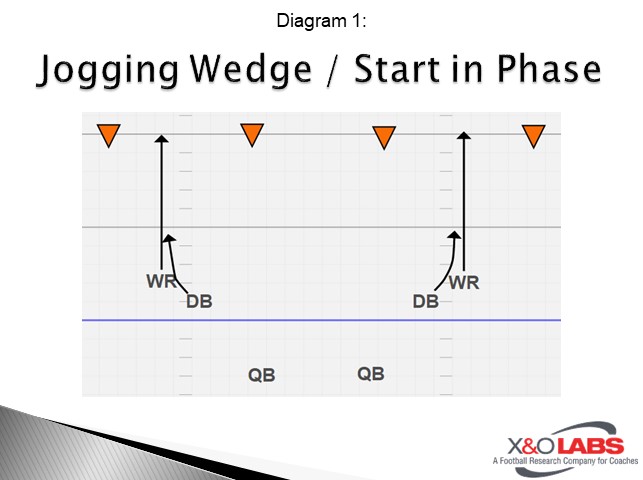By Eliot Fields
Assistant Defensive Coordinator & Safeties Coach
Carroll University (WI)
Twitter: @CoachFields_CU
Introduction
We define being in-phase as the defender being in good position on a receiver. This means our defender is in a slight trail technique in which they are close enough to get their hand to the receiver’s hip while still maintaining a slight bend in the elbow. When we are in-phase, we are in good position to play the ball if thrown in our direction. We will utilize our wedge progression to teach our in-phase technique.
On the other hand, we will define being out-of-phase as the defender not being in position to make a play on the ball. This means the defender will need to play the receiver’s hands instead. When we are out-of-phase, we will utilize our disadvantage progression.
While some of the drills you will see here may be familiar, I firmly believe that the progressions we use to teach the techniques help our players fully understand the technique, as well as the “why” behind how we do things. Teaching a technique is one thing, but without teaching the student-athlete the “why,” we are not truly helping that individual become a better player. By utilizing these progressions, we are able to introduce the different aspects of our in-phase and out-of-phase techniques, identify when each will be used and ultimately tie everything back together.
Wedge Progression
As I stated above, when teaching our wedge progression we are saying that our defender is in-phase with the receiver and can make a play on the ball. We begin by teaching the wedge, as it is our best-case scenario. When we are teaching technique, we always want to teach the proper technique before moving on to contingencies.
The primary focus of our wedge progression is getting into, or maintaining, proper body position on a vertical route by the receiver. This progression is broken into 4 phases:
- Jogging Wedge (w/o ball)
- Start In-Phase
- Mirror Breaks
- Full Wedge
Jogging Wedge
We start our progression by teaching the correct body position and posture. We want this drill to simulate perfect positioning against a receiver downfield. For this drill, we will slow down the tempo of the receiver and the defender, and eliminate the ball. The defender will start in-phase with the receiver, meaning that he has:
- Inside positioning on the receiver
- A slight trail technique (between ¼ and ½ man) on the receiver
- A slight bend in the elbow with the bottom 6 inches of his Ulna (DB’s outside arm) making contact with the inside hip of the receiver
On the whistle, both players will jog at 60-75% speed, with the defender looking to maintain this position on the receiver through the rep. The focus of this drill is 100% on body positioning and posture. The defender should be playing within their frame and under control throughout the entire rep.

To study film of this drill, click on the video below:








